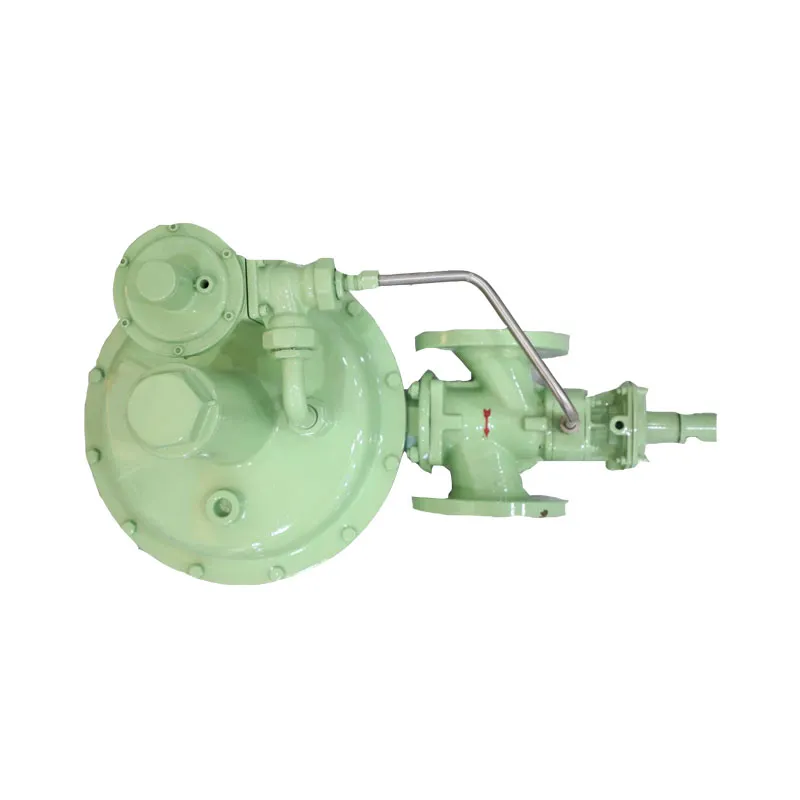
Nov . 16, 2024 16:53
Back to list
صمام تنظيم
Understanding Pressure Regulating Valves (صمام تنظيم)
Pressure regulating valves (PRVs), or صمام تنظيم in Arabic, are essential components in various industrial and residential applications
. They play a crucial role in managing and controlling the pressure of liquids and gases within a system, ensuring operational efficiency and safety. In this article, we will explore the function, importance, applications, and types of pressure regulating valves, shedding light on their pivotal role in modern engineering.Function of Pressure Regulating Valves
The primary purpose of a pressure regulating valve is to maintain a consistent outlet pressure despite fluctuations in the inlet pressure. When the inlet pressure rises above the preset level, the PRV automatically reduces the flow, stabilizing the system pressure. Conversely, if the inlet pressure drops, the valve adjusts accordingly to increase the flow and maintain the desired pressure. This crucial function prevents potential damage to equipment and ensures the safe operation of various processes.
PRVs consist of several components, including a valve body, a diaphragm or piston, and a spring mechanism. When the pressure differential changes, the diaphragm or piston moves in response to this change, which either opens or closes the valve. This action ensures that pressure is regulated effectively and minimizes the risk of pressure surges that could lead to equipment failure or hazardous situations.
Importance of Pressure Regulating Valves
The significance of pressure regulating valves cannot be overstated. They are integral to maintaining safe operating conditions in multiple sectors, including water supply systems, oil and gas, chemical processing, and HVAC (heating, ventilation, and air conditioning) systems. By controlling pressure, PRVs help to
1. Prevent Damage High or fluctuating pressure can lead to wear and tear on pipes, connectors, and machinery. By regulating pressure, PRVs extend the lifespan of these components, reducing maintenance costs and downtime.
2. Enhance Efficiency Systems that operate under stable pressure conditions perform more efficiently. This efficiency translates into energy savings and improved overall productivity.
3. Ensure Safety In industries where pressure variations can lead to explosions or other hazardous incidents, PRVs serve as vital safety devices. They help in avoiding dangerous situations that could threaten human life and property.
4. Maintain Quality In processes like chemical manufacturing or food production, maintaining consistent pressure is crucial for product quality. PRVs help ensure uniformity in production conditions, leading to better quality control.
Applications of Pressure Regulating Valves
Pressure regulating valves find applications in a wide array of fields. Some common ones include
صمام تنظيم

- Water Distribution In municipal water systems, PRVs help manage the pressure in pipes to ensure that water reaches consumers at a consistent and safe rate.
- Oil and Gas Industry PRVs are used to maintain the pressure in pipelines and processing equipment, preventing leaks and ensuring safe transportation of these resources.
- Chemical Processing In chemical plants, maintaining precise pressure levels is essential for safe reactions and product quality.
- HVAC Systems In heating and cooling applications, PRVs help to regulate the pressure within the system, ensuring efficient temperature control.
Types of Pressure Regulating Valves
There are various types of pressure regulating valves, each suited for specific applications. Some of the most common types include
1. Spring-Loaded PRVs These are the most widely used PRVs, utilizing a spring mechanism to control the valve opening based on pressure changes.
2. Pilot-Operated PRVs These PRVs utilize a secondary pilot valve to enhance the performance and sensitivity of pressure regulation, usually employed in high flow or critical applications.
3. Electro-Mechanical PRVs These valves incorporate electronic controls to provide precise pressure management, often used in advanced applications requiring real-time adjustments.
4. Solenoid-Operated PRVs These utilize electrical signals to operate the valve, allowing for rapid and precise control over pressure levels in automated systems.
Conclusion
In summary, pressure regulating valves (صمام تنظيم) are critical components in various industries, ensuring safety, efficiency, and reliability in systems dealing with liquids and gases. By understanding their functionality, importance, applications, and types, stakeholders can make informed decisions about the integration and maintenance of these valves into their systems. As technology advances, the role of PRVs will continue to evolve, underscoring their importance in modern engineering practices.
Next:
Latest news
-
Safety Valve Spring-Loaded Design Overpressure ProtectionNewsJul.25,2025
-
Precision Voltage Regulator AC5 Accuracy Grade PerformanceNewsJul.25,2025
-
Natural Gas Pressure Regulating Skid Industrial Pipeline ApplicationsNewsJul.25,2025
-
Natural Gas Filter Stainless Steel Mesh Element DesignNewsJul.25,2025
-
Gas Pressure Regulator Valve Direct-Acting Spring-Loaded DesignNewsJul.25,2025
-
Decompression Equipment Multi-Stage Heat Exchange System DesignNewsJul.25,2025

